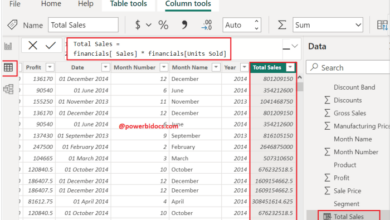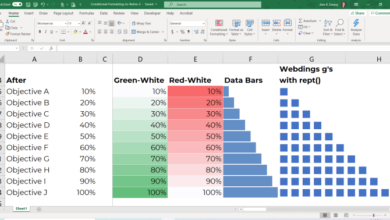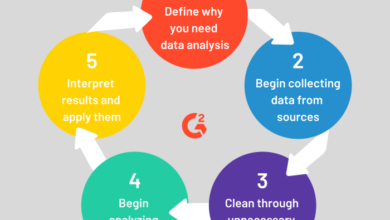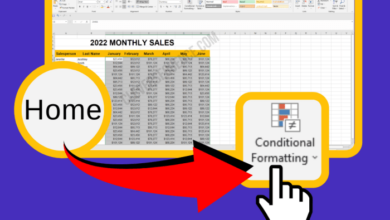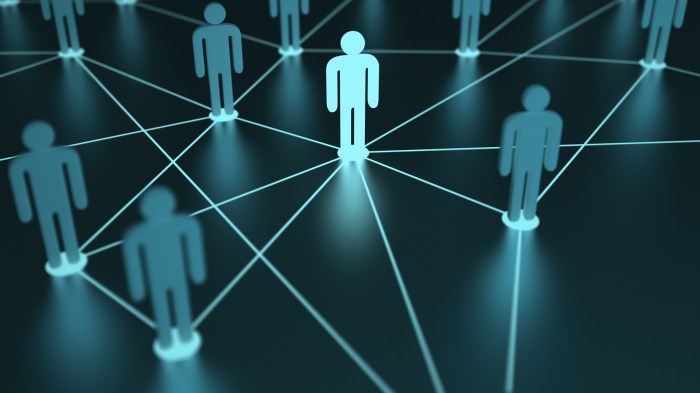
How Graph Databases Help Analyze Complex Relationships
How graph databases help analyze complex relationships is a question that’s becoming increasingly relevant in today’s data-driven world. While traditional relational databases excel at storing structured data, they struggle to efficiently handle the intricate connections that exist in real-world scenarios.
This is where graph databases come in, offering a unique and powerful approach to modeling and analyzing relationships.
Think about it: social networks, financial transactions, scientific research, and even our own personal connections are all built upon complex webs of relationships. Graph databases, with their ability to represent these relationships directly, provide a natural and intuitive way to understand and extract insights from interconnected data.
Introduction to Graph Databases
Graph databases are a powerful tool for managing and analyzing data with complex relationships. Unlike traditional relational databases, which store data in tables with rows and columns, graph databases represent data as nodes and edges, forming a network-like structure. This structure allows for efficient querying and traversal of interconnected data, making them ideal for scenarios involving social networks, recommendation systems, fraud detection, and more.
Graph databases excel at uncovering hidden connections within intricate datasets, much like how cloud project management software can map out dependencies and task relationships within a complex project. By visualizing these relationships, we gain a deeper understanding of how different elements interact, allowing for more efficient decision-making and problem-solving.
Graph Database Concepts
Graph databases use a simple yet effective model to represent data. They consist of two primary elements:
- Nodes:Nodes represent entities in the data, such as people, places, or things. Each node has unique properties that define its characteristics.
- Edges:Edges represent the relationships between nodes. They describe how entities are connected, indicating interactions, associations, or dependencies. Edges can also have properties, providing additional information about the relationship.
This intuitive structure allows graph databases to efficiently capture and analyze intricate relationships within data.
Advantages of Graph Databases
Graph databases offer several advantages over traditional relational databases when dealing with complex relationships:
- Efficient Relationship Navigation:Graph databases excel at traversing relationships between nodes, making it easy to find connections and patterns within data. This capability is crucial for tasks like social network analysis, fraud detection, and recommendation systems.
- Flexible Data Modeling:Graph databases are highly flexible and can adapt to evolving data structures. They allow for dynamic schema changes, making it easier to handle new relationships or data types without altering the entire database structure.
- Fast Query Execution:Graph databases are optimized for traversing relationships, resulting in faster query execution times compared to relational databases, especially for complex queries involving multiple joins.
Real-World Applications
Graph databases find widespread use in various domains, including:
- Social Network Analysis:Graph databases can be used to analyze social networks, identifying influential users, communities, and trends. For example, Facebook uses a graph database to power its social network, managing billions of user connections and interactions.
- Recommendation Systems:Graph databases are essential for building recommendation systems that suggest products, content, or connections based on user preferences and past interactions. For instance, Amazon utilizes a graph database to power its recommendation engine, suggesting relevant products based on user purchase history and browsing behavior.
- Fraud Detection:Graph databases can help identify fraudulent activities by analyzing patterns and relationships in financial transactions, user behavior, and other data sources. Financial institutions use graph databases to detect money laundering, credit card fraud, and other financial crimes.
- Knowledge Graph Construction:Graph databases are ideal for building knowledge graphs, which represent knowledge about a specific domain in a structured and interconnected way. These graphs can be used for tasks like semantic search, question answering, and natural language understanding.
Representing Complex Relationships
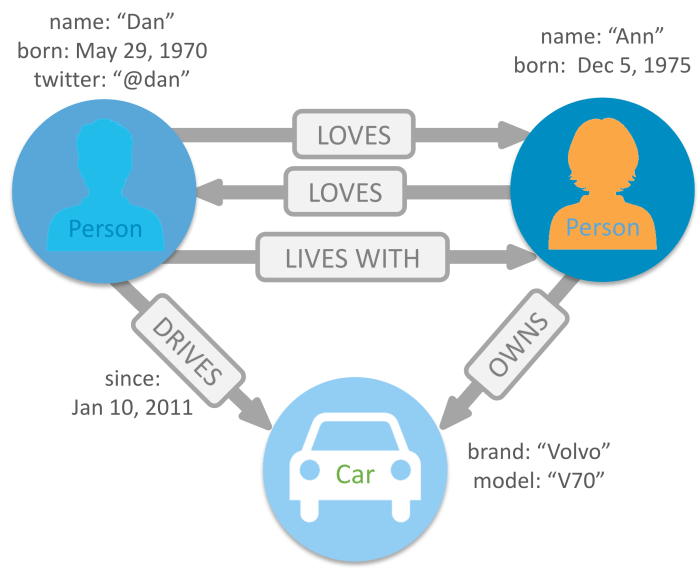
Graph databases are designed to excel at modeling and analyzing intricate relationships between data entities. Unlike traditional relational databases, which store data in tables, graph databases represent data as a network of interconnected nodes and edges. This structure allows for a more intuitive and efficient way to capture the complex relationships inherent in many real-world scenarios.
Components of a Graph Database
Graph databases are built upon three fundamental components: nodes, edges, and properties.
- Nodesrepresent entities or objects within the data. They can be individuals, places, things, concepts, or any other relevant element in the system. For instance, in a social network, nodes could represent users. In a product catalog, nodes could represent products.
- Edgesrepresent the relationships between nodes. They connect nodes and define the nature of their connection. For example, in a social network, an edge could represent the “friend of” relationship between two users. In a product catalog, an edge could represent the “is related to” relationship between two products.
- Propertiesprovide additional information about nodes and edges. They are attributes that further describe the entities and relationships. For instance, a user node could have properties like “name,” “age,” and “location.” A “friend of” edge could have a property like “since” to indicate the date of the friendship.
Graph databases excel at uncovering hidden connections within intricate data sets, making them perfect for analyzing things like social networks or customer behavior. This kind of analysis is especially important for streaming services like Netflix, which need to understand their audience to deliver relevant content.
That’s why it’s crucial to stay up-to-date with the latest technology, especially when netflix is ditching support for these older apple tv streaming boxes upgrade before the next binge-worthy show premieres. By analyzing the relationships between users, devices, and content, graph databases can help Netflix optimize their platform and deliver a more personalized experience, ultimately leading to greater customer satisfaction.
Modeling Relationships
Graph databases provide a flexible and powerful way to model various types of relationships. The following examples illustrate how different relationship types can be represented using nodes, edges, and properties.
Imagine trying to understand the intricate web of relationships between characters in a complex novel. Graph databases excel at this kind of analysis, allowing us to map and explore the connections between entities, just like we see in the fascinating image of Tim Cook sporting Apple’s new Vision Pro in a recent Vanity Fair interview, a glimpse into the future of computing.
By visualizing these connections, we gain deeper insights into the structure and dynamics of complex systems, whether it’s a literary masterpiece or the intricate world of technology.
- “Friend of” Relationship:In a social network, the “friend of” relationship can be modeled using an edge connecting two user nodes. The edge can be labeled as “friend of” and can have additional properties like “since” to indicate the date of the friendship.
- “Parent of” Relationship:In a family tree, the “parent of” relationship can be modeled using an edge connecting a parent node to a child node. The edge can be labeled as “parent of” and can have properties like “gender” to indicate the parent’s gender.
- “Connected to” Relationship:In a network of devices, the “connected to” relationship can be modeled using an edge connecting two device nodes. The edge can be labeled as “connected to” and can have properties like “type” to indicate the type of connection (e.g., wired, wireless).
Advantages of Graph Databases for Analysis: How Graph Databases Help Analyze Complex Relationships
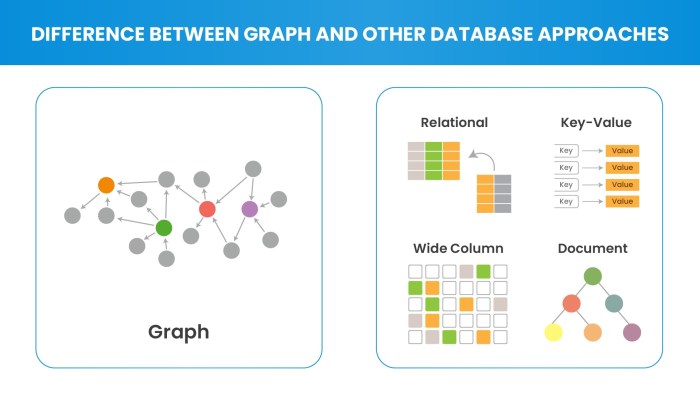
Graph databases excel in analyzing complex relationships, offering distinct advantages over traditional relational databases. Their inherent structure allows for efficient traversal and exploration of interconnected data, leading to faster insights and a deeper understanding of intricate relationships.
Performance Comparison with Relational Databases
When dealing with queries involving multiple relationships, graph databases demonstrate superior performance compared to relational databases. This is because graph databases directly store relationships as edges, allowing for efficient traversal across connected nodes. In contrast, relational databases require joining multiple tables to retrieve information about interconnected entities, which can be computationally expensive, especially with large datasets.
For example, consider a social network where we want to find all friends of a particular user’s friends. In a graph database, this query involves traversing the “friend of” edges, which can be done efficiently. In a relational database, this would involve joining the “user” and “friend” tables multiple times, leading to significantly slower query execution.
Use Cases for Enhanced Analysis
Graph databases significantly enhance analysis capabilities in various domains.
- Fraud Detection:By analyzing transaction patterns and identifying unusual connections, graph databases can effectively detect fraudulent activities in financial systems. For example, by examining connections between accounts, transactions, and locations, suspicious patterns can be quickly identified, leading to early detection and prevention of fraud.
- Social Network Analysis:Graph databases enable efficient analysis of social networks, allowing for the identification of influential individuals, community structures, and trends. For instance, by analyzing user interactions, relationships, and content, social network platforms can understand user behavior, target specific audiences, and personalize content recommendations.
- Knowledge Graph Construction:Graph databases are instrumental in building knowledge graphs, which represent knowledge in a structured and interconnected manner. These graphs facilitate knowledge discovery, reasoning, and semantic search. For example, knowledge graphs are used in search engines to provide more relevant and contextually aware search results.
- Recommender Systems:Graph databases can be used to build sophisticated recommender systems by leveraging user preferences, item attributes, and past interactions. For example, by analyzing user purchase history and product relationships, e-commerce platforms can recommend relevant products to individual customers.
Graph Database Queries and Traversal
Graph databases excel at navigating and analyzing complex relationships within data. Unlike traditional relational databases, which store data in tables with rows and columns, graph databases represent data as nodes and edges, allowing for efficient traversal and querying of interconnected information.
Graph Traversal Algorithms
Graph traversal algorithms are fundamental to navigating relationships in graph databases. These algorithms systematically explore the graph structure, visiting each node and edge in a specific order. Popular algorithms include:
- Depth-First Search (DFS): This algorithm explores as far as possible along each branch before backtracking. It is suitable for finding specific paths or traversing hierarchical structures.
- Breadth-First Search (BFS): This algorithm explores all nodes at a given level before moving to the next level. It is useful for finding the shortest path between two nodes or exploring all reachable nodes within a certain distance.
These algorithms form the basis of graph database query languages, enabling efficient traversal and analysis of complex relationships.
Finding Friends in a Social Network
Imagine a social network represented as a graph database. Nodes represent users, and edges represent relationships like “friend” or “follower.” To find all friends of a specific person, a simple graph query can be used.
cypherMATCH (user:User name: “Alice”)-[:FRIEND]->(friend:User)RETURN friend.name;
This query uses the Cypher query language, a popular language for graph databases. It matches the user node with the name “Alice” and traverses the “FRIEND” relationship to find all connected friend nodes. The query returns the names of the friends.
Extracting Insights from Interconnected Data
Graph databases offer powerful capabilities for extracting insights from interconnected data. For instance, you can:
- Identify influential individuals in a social network by analyzing the number of connections and their centrality within the graph.
- Detect fraudulent transactions in financial networks by identifying unusual patterns of connections and transactions.
- Analyze customer behavior in e-commerce platforms by understanding their purchasing history and product recommendations.
These insights are possible due to the inherent ability of graph databases to efficiently traverse and analyze complex relationships within data.
Applications of Graph Databases
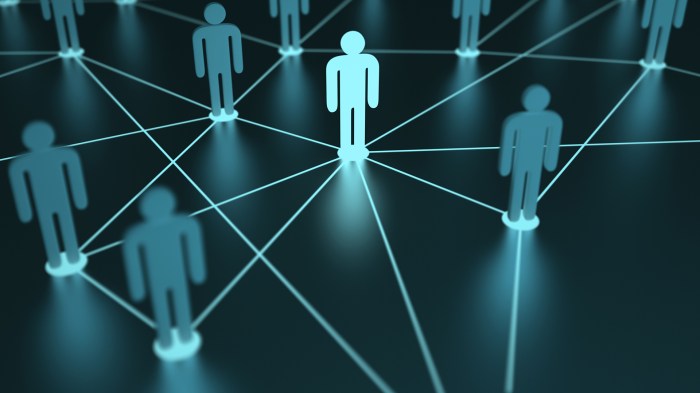
Graph databases are not just a theoretical concept; they are actively used in a variety of industries to solve complex problems. Their ability to efficiently manage and analyze relationships between data points makes them ideal for scenarios where traditional relational databases struggle.
Here are some real-world examples of how graph databases are being used to make a difference:
Social Networks
Social networks are built on relationships – connections between people. Graph databases are a natural fit for representing and analyzing these complex social structures.
- Friend Recommendations:Graph databases can be used to suggest friends to users based on their existing connections, shared interests, and other factors. For example, Facebook’s “People You May Know” feature uses a graph database to identify potential friends.
- Community Detection:Graph databases can be used to identify groups of users with similar interests or behaviors. This information can be used to create targeted marketing campaigns or to identify potential influencers.
- Spam Detection:Graph databases can be used to detect spammers and bots by analyzing their connections and activity patterns. This can help to improve the overall quality of the social network.
Fraud Detection
Fraudulent activities often involve complex patterns of interactions between individuals and organizations. Graph databases can be used to detect these patterns and identify potential fraudsters.
- Financial Transactions:Graph databases can be used to analyze financial transactions and identify suspicious patterns. For example, a graph database can be used to detect money laundering by analyzing the flow of funds between different accounts.
- Insurance Claims:Graph databases can be used to detect fraudulent insurance claims by analyzing the relationships between claimants, doctors, and other parties involved.
- Identity Theft:Graph databases can be used to identify potential victims of identity theft by analyzing their personal information and online activity.
Recommender Systems
Recommender systems are used to suggest products, services, or content to users based on their past behavior and preferences. Graph databases can be used to build more effective recommender systems by taking into account the relationships between users, items, and other factors.
- E-commerce:Graph databases can be used to recommend products to users based on their past purchases, browsing history, and the purchases of other users with similar interests.
- Movie Recommendations:Graph databases can be used to recommend movies to users based on their ratings, the ratings of other users, and the actors, directors, and genres of the movies.
- Content Recommendations:Graph databases can be used to recommend articles, videos, or other content to users based on their reading history, the content they have shared, and the content that other users with similar interests have consumed.
Knowledge Graphs
Knowledge graphs are a type of graph database that is specifically designed to store and query knowledge about the world. They are used in a variety of applications, including search engines, question answering systems, and natural language processing.
- Search Engines:Knowledge graphs can be used to improve the accuracy and relevance of search results by providing context and understanding of the relationships between different entities.
- Question Answering Systems:Knowledge graphs can be used to answer complex questions by connecting different pieces of information.
- Natural Language Processing:Knowledge graphs can be used to improve the performance of natural language processing tasks, such as machine translation and sentiment analysis.
| Industry | Application | Benefits of Using Graph Databases |
|---|---|---|
| Social Networks | Friend Recommendations, Community Detection, Spam Detection | Efficiently analyze complex relationships between users, identify patterns and trends, and personalize user experiences. |
| Fraud Detection | Financial Transactions, Insurance Claims, Identity Theft | Detect suspicious patterns and relationships, identify potential fraudsters, and reduce financial losses. |
| Recommender Systems | E-commerce, Movie Recommendations, Content Recommendations | Improve the accuracy and relevance of recommendations, personalize user experiences, and increase customer satisfaction. |
| Knowledge Graphs | Search Engines, Question Answering Systems, Natural Language Processing | Store and query knowledge about the world, provide context and understanding, and improve the performance of various applications. |
Future Trends in Graph Databases
Graph databases are rapidly evolving, with new trends emerging that promise to further enhance their capabilities and expand their applicability in various domains. These trends are driven by the increasing complexity of data and the need for more sophisticated analytical tools to extract valuable insights.
Integration with Other Data Sources, How graph databases help analyze complex relationships
The integration of graph databases with other data sources is a crucial trend that enables a more holistic view of data. By connecting graph databases to relational databases, NoSQL databases, and data lakes, organizations can leverage the strengths of each system while maintaining data consistency.
This integration facilitates a unified data model that enables complex queries across multiple data sources, improving data analysis and decision-making.
- Federated Queries:This approach allows users to query data across multiple data sources using a single query language, eliminating the need to manually join data from different systems. This simplifies data analysis and enables more comprehensive insights.
- Data Virtualization:Data virtualization layers provide a unified view of data from different sources without physically moving or replicating data. This approach reduces data redundancy and simplifies data access, enabling efficient analysis across disparate systems.
- Data Pipelines:Data pipelines can be used to seamlessly integrate data from various sources into graph databases. This enables real-time data analysis and allows organizations to leverage data from diverse sources for more comprehensive insights.
Advanced Graph Analytics Algorithms
Graph databases are increasingly incorporating advanced graph analytics algorithms to enhance their analytical capabilities. These algorithms enable the discovery of complex patterns and relationships within data, providing deeper insights and supporting more informed decision-making.
- Community Detection:Algorithms like Louvain Modularity and Label Propagation are used to identify clusters of interconnected nodes within a graph, revealing hidden communities or groups with shared characteristics. This is valuable in social network analysis, fraud detection, and customer segmentation.
- Link Prediction:These algorithms predict future connections between nodes based on existing relationships. This can be applied to recommend products, identify potential business partners, or predict the spread of diseases.
- Pathfinding:Algorithms like Dijkstra’s Algorithm and A* Search are used to find the shortest or most efficient paths between nodes in a graph. This is useful for route optimization, network analysis, and supply chain management.
Cloud-Based Graph Database Services
Cloud-based graph database services are gaining popularity due to their scalability, flexibility, and cost-effectiveness. These services offer managed infrastructure and simplified deployment, allowing organizations to focus on data analysis rather than managing complex infrastructure.
- Scalability:Cloud services provide on-demand scaling capabilities, enabling organizations to handle large and rapidly growing datasets without infrastructure limitations.
- Cost-Effectiveness:Cloud-based services offer a pay-as-you-go pricing model, reducing the upfront costs associated with traditional on-premises deployments.
- Security:Cloud providers offer robust security features and compliance certifications, ensuring the safety and privacy of sensitive data.


